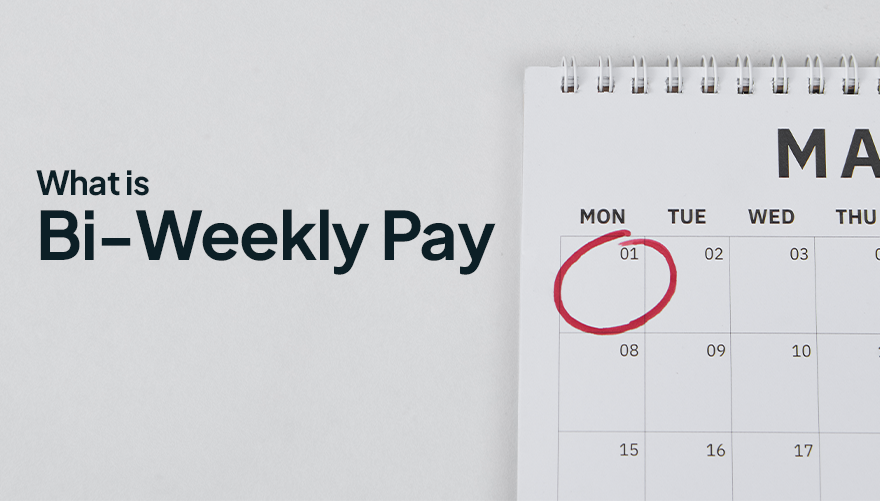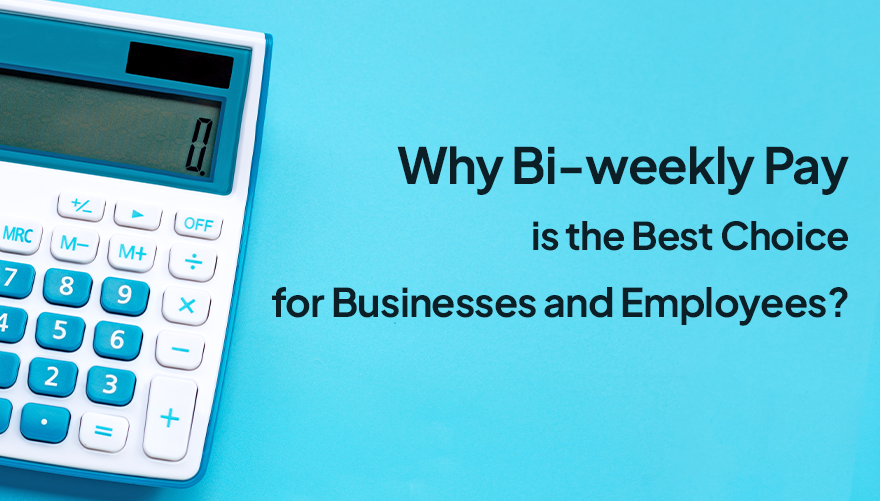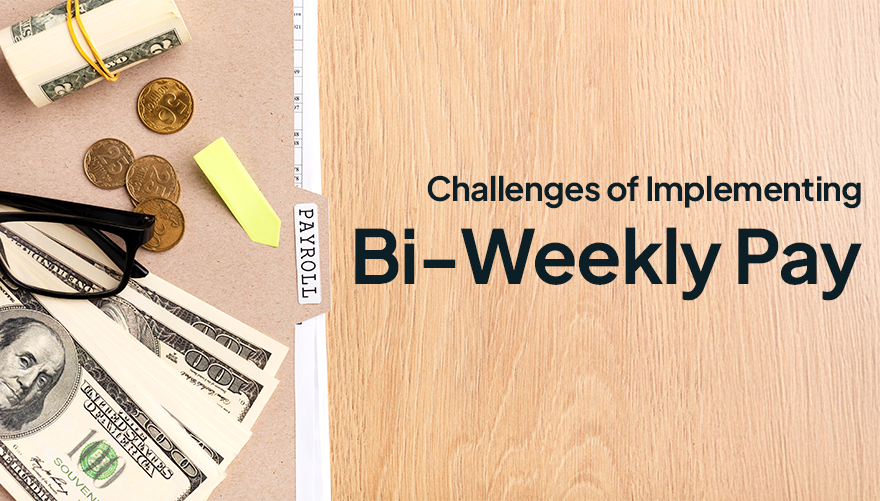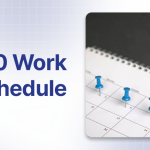Table of Contents
Nothing excites an employee more than a pay day; the day when their hard work pays off. It comes with a lot of benefits and promises for employees. However, the same does not apply to HR professionals and business owners. Payroll management is one of the most challenging aspects and requires multiple strategies, such as tracking employee performance, attendance, choosing a perfect pay cycle, compliance with regulatory requirements, and regular audits.
The traditional monthly pay cycle is most preferred. It may not be ideal for every business with the rise of hybrid remote, hourly-based gigs, and freelance work models. They must choose a perfect payroll schedule based on their requirements. Bi-weekly is the perfect solution for HR professionals to manage employees and their paychecks, especially in remote or hourly-based models.
Businesses can use employee management softwares to streamline their payment process. It also allows easy tracking of employees’ performance, attendance, and overtime to manage payments. The software seamlessly integrates with the API of payroll and HRM tools to simplify the process.
This blog will guide you through the benefits and challenges of Biweekly pay and how an employee management software can simplify the process.
What is Bi-Weekly Pay, and how is it calculated?

Bi-weekly pay means the employee will receive paychecks twice a month, i.e., on every alternate Friday. In this payroll schedule employee gets 26 paychecks every year instead of 12 monthly and 24 semi-monthly paychecks. It offers a balance between payroll efficiency and employee satisfaction. It is the best option for an hourly-based workforce and freelancers.

Streamline Your Biweekly Payroll Process with wAnywhere
wAnywhere automates timesheets, attendance, and overtime—so HRs can manage biweekly payroll with zero stress.
It is widely used by industries such as construction, manufacturing, education, and freelancing services. Approximately 27% of private businesses in the USA prefer biweekly pay. It provides streamlined payroll management with 26 Paychecks per year rather than 12 per year.
The calculation for this pays cycle follows a simple formula:
1. For Salaried Employee:
Biweekly Cheque: Annual Package/ 26
For example, if Sam earns $60,000 annually, his biweekly cycle pay cheque will be:
$60,000/26 = $2,307.69 per cycle
2. For an hourly-based workforce:
Bi-weekly Payment = Total Hours of work X Hourly Wage
For example, if William works 100 hours in a monthly period at the rate of $2 per hour. His payment will be:
100 X $2 = $200
Why Bi-weekly Pay is the Best Choice for Businesses and Employees?

Biweekly is gaining popularity globally for its advantages, such as frequent payment for employees and streamlined payroll management. It was also easy for HR professionals to manage hourly-based employees and track their attendance and performance.
1 . More Frequent payments for Employees
It offers more frequent pay cycles for employees, especially in hourly based and freelancing services. They can receive 26 pay cheques instead of 12 and 24, depending on monthly or semi-monthly, respectively. More paysheet often offers better job satisfaction and loyalty towards owners.
2. Streamlined Payroll Management
Employee management software automatically tracks employee attendance, leave, overtime, and performance to evaluate their working hours. The real-time data helps HR professionals to calculate payments and ensure compliance with labor laws.

Try wAnywhere’s Free Overtime Calculator
Calculate overtime pay for your workforce accurately
3. Simplified Compliance with Labor Laws
Businesses must comply with labor laws and other regulatory bodies for a hassle-free operation. It is easy to track employee attendance and overtime to calculate payment and avoid legal penalties. It also simplifies taxation, audit reports, and supports legal accuracy to simplify compliance with regulatory bodies and labor laws.
4. Improved Employee Management and Performance
It boosts employee satisfaction due to a regular and predictable pay cycle. The regular Bi-weekly pay reduces financial stress and boosts loyalty toward their employer. It also enhances employees’ attendance and overtime tracking for paycheque calculation. This regular payment provides efficiency, is more productive, and boosts the chance of employee retention.
What are the Challenges of Implementing Bi-weekly Pay

It offers many benefits over semi-monthly and monthly pay cycles, such as boosted productivity, attendance, payroll management, and reduced risk of legal penalties. It poses comprehensive challenges for HR professionals to manually track employee attendance and overtime.
One of the major challenges of bi-weekly pay is the complex payment cycle; it can sometimes be a headache for HR to remember and process payment every alternate Friday. Additionally, the calculation of work per hour may be complex due to uneven working schedules for hourly and gig-based employees.
It also requires a high payroll processing to manage HRM and payroll softwares for multiple payment cycles. Another major challenge for small businesses is managing their cash flow during the payment day, which sometimes causes delays in payment and financial stress.
Businesses can use reliable employee management softwares to automatically track the workforce, automate the payroll cycle, and provide real-time alerts on upcoming paydays.
Additionally, HR can maintain transparent communication about pay cycles and regulations with employees during hiring or onboarding. This helps to bridge confusion and boost job satisfaction and loyalty, if there is a case of payment delays.
Read more: Bi-weekly vs Semi-Monthly Pay Schedules
wAnywhere: Your Smart Solution for Simplifying Employee Management
We understand how complex it is to manage hybrid and hourly-based work environments, especially in today’s fast-paced world. Our platform offers intelligent attendance management, online timesheets, free overtime calculations, and accurate time tracking. These powerful features provide HRs with real-time, precise reports on each employee’s work schedule—from login to logout. With these in-depth reports, finance departments can also streamline and ensure an error-free salary dispersal process.
No matter which tools you are using, wAnywhere can integrate with all your software like HRMS, project management, or payroll systems, allowing you to create automated workflows that help you streamline bi-weekly payroll. wAnywhere allows both employees and HRs to experience a smooth, reliable, and timely payment cycle. Whether you are managing remote, hourly, or freelance workers, our software automates the entire process so you can focus on strategic and creative work and boost your overall productivity.
Conclusion
Biweekly pay is becoming a popular choice for HR and employees, especially hourly-based and freelancing services. It offers several benefits, such as 26 pay cycles rather than 12 or 24, based on semi-monthly and monthly pay schedules, respectively. It also streamlines the payment process, boosts the retention rate, and employee productivity.
However, it may be challenging to track attendance and pay dates confusion.
Therefore, businesses can use employee management software to simplify payroll management and employee time tracking. With wAnywhere, you can eliminate payroll hassles, ensure timely biweekly payments, and make smarter, data-driven decisions to manage your workforce with confidence.

Tired of Payroll Errors? Get the Data You Need
Get real-time visibility into attendance, hours worked, and employee activity. Use wAnywhere’s analytics and User session summary reports to simplify payroll decisions.












